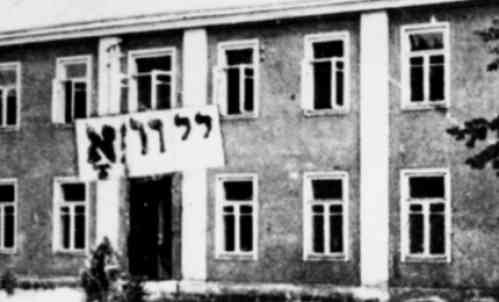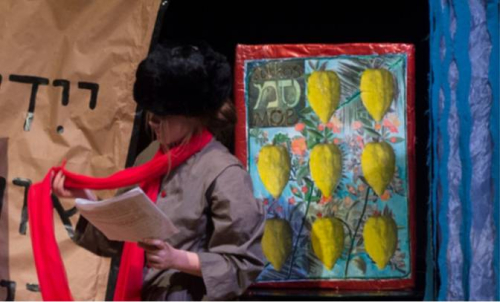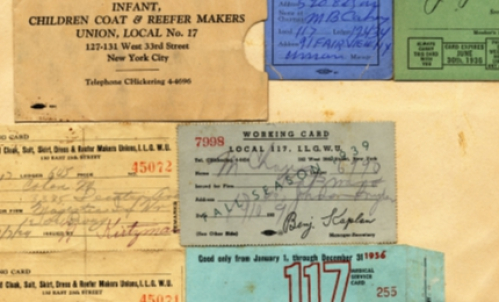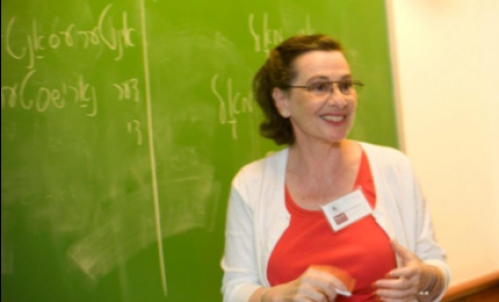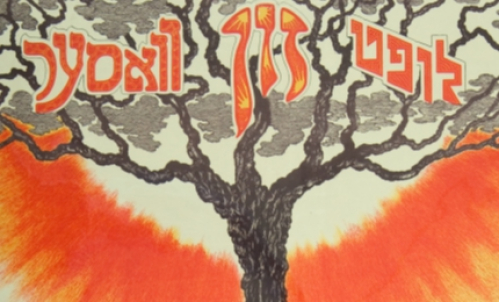2021 Winter Program
Course List · January 5 – 21, 2021
The Deliberate Destruction of Knowledge, from Ancient Assyria to the Digital Age
Instructor: Richard Ovenden
This course will examine the history of deliberate destruction of organised bodies of knowledge, particularly libraries and archives, over the past 3,000 years. The course will look at the motivations for destroying knowledge as well, and will consider how libraries and archives have responded through evolving techniques and approaches for preservation. The course will consider a series of case studies from across the globe over a 3,000 year time span.
Tyranny and Freedom
Instructor: Timothy Snyder
We are called to remember. And yet we are told that the past does not repeat. How is the sensible citizen to remember the past in a way that is both sensible and useful? What might the particular history of the Jews in twentieth-century Europe illuminate about the possibilities for tyranny in the twenty-first century world?
This course engages these issues at three levels, asking first how an interpretation of the Holocaust might allow us to see the risks of the contemporary world differently, then how to understand the history of the 2010s, and finally what can be done to coordinate an understanding of the past with a richer and broader view of freedom in the future. Each session will be divided between a lecture and discussion. Participants will be expected to do the reading before each session and come prepared with at least one question.
The Aftermath of Jedwabne
Instructor: Anna Bikont
Polish-Jewish relations in the Holocaust has long been a point of contention. Ever since 2000, when Jan Gross brought to light the murder of Jews from the town of Jedwabne by their Polish neighbors during World War II in his book Neighbors, the debate has intensified. This class will explore the discussion over the past 20 years over Polish-Jewish relations during the Holocaust.
Among other pressing topics, this class will consider the categorization of Poles and other nations of occupied Europe during the Holocaust. Is it justified to continue using the word bystander, or should there be only a binary of perpetrator and victim? How do the Righteous Among the Nations fit into the narrative? How does the Polish government and nation of the 21st century seek to shape the memory of the 20th century? Can the truth revealed be denied once again? This class will discuss these questions using texts by Barbara Engelking, Jan T. Gross, Joanna Tokarska-Bakir, and Elżbieta Janicka, among others.
Yinglish Popular Music: Mickey Katz, the Barton Brothers, and Allan Sherman
Instructor: Ronald Robboy
In the years immediately following the Second World War, the Barton Brothers, an anarchic Catskill comedy duo, began recording humorous bilingual parody songs that relied in no small part on Yiddish theater and radio for raw material. The Bartons, however, were not the only ones recording Yinglish novelty songs. Molly Picon, Menasha Skulnik, and others were likewise exploring this territory as the post-war boom in sound recordings offered new creative possibilities. More than any, though, it was “Joe & Paul,” the Barton Brothers’ send-up of Yiddish radio, that became a bona fide hit record. In turn, inspired clarinetist Mickey Katz, based in Los Angeles and working with first-call studio players, to begin recording his own exceedingly funny Yiddish-mixed-with-English lyrics set to the melodies of current Hit Parade songs. Katz’s successful albums all through 1950s then inspired Allan Sherman, an erstwhile TV game show producer to begin recording his own parodies of standards and folk songs that achieved meteoric success in the 1960s. Though hardly any of Sherman’s hit records had actual Yiddish content, many still had a clearly Jewish inflection that often alluded, whether phonetically, grammatically, or syntactically, to Yiddish beginnings.
After acquainting ourselves with some of those Yinglish novelty recordings by Picon, Skulnik, and others, we will do close readings of tracks by the Barton Brothers, and then focus particularly on Mickey Katz, before closing with an appreciative look at Allan Sherman’s work. For all these artists, we will consider their language, their music, their delivery, and what made them so influential and so very funny.
Yiddish Children’s Literature
Instructor: Miriam Udel
One of the most exciting projects to emerge from 20th-century Yiddish culture was the creation of a literature for children. A corpus of nearly a thousand free-standing books and several periodicals burgeoned between the wars and continued to flourish into the 1970s. In this course, Miriam Udel, editor and translator of the new anthology Honey on the Page: A Treasury of Yiddish Children’s Literature, will examine the artistic and political prerogatives of this literature—opening a new window onto the Jewish confrontation with modernity. What was distinctive about Jewish children’s literature in both Yiddish and Hebrew, and which preoccupations and tendencies were unique to Yiddish? Can any lines of continuity be drawn between these stories and the English-language children’s books most of us grew up on? How could authors with radical political agendas ground their work in an ancient religious civilization? Which values were most worthy of transmission to future generations? And how could children’s stories be used to engender an abiding love for and commitment to Yiddish itself?
Yiddish Poetry and Politics
Instructor: Anita Norich
Yiddish American poetry was once called “the rhyme department of the Jewish labor movement.” Zishe Landau, who coined the phrase, meant it disparagingly, but in this mini-course we will reconsider the political content and context of a range of works and consider a range of questions. What effect can political poetry have? How were the hopes for a “nayer, frayer tsayt” [a new, free time] expressed? How did these writers respond to the horrors of lynching, or the trial of the Scottsboro Boys? What is the connection between poetry and workers’ movements? What does “Jewish geography” in the 20th century mean to writers who wrote about both emigration and immigration? How did so many of these poems become songs?
We’ll divide the course into three sections: one week will be devoted to labor and protest, one to race relations, and one to the politics of places (Israel, the “Old Country,” the U.S.). Authors to be considered include Dovid Edelshtat, Yankev Glatshteyn, Moyshe Leyb Halpern, Aaron Kurtz, Malke Lee, Esther Shumyatsher, Dora Teitelbaum, Berysh Vaynshteyn, Chaim Zhitlowsky, and more. All readings will be in English, and Yiddish texts, songs, and videos will be provided for those who wish to have them.
Borges and the Jews
Instructor: Ilan Stavans
Throughout his life, Jorge Luis Borges (Argentina, 1899-1986), arguably the most important Latin American writer of the twentieth century, found inspiration in Jewish themes and motifs. His interests went from Kabbalah and Spinoza to Kafka, Buber, and Agnon. He wrote about the Jewish agricultural colonies in the Pampas, opposed Nazism, manifested himself against Perón, decried anti-Semitism, and wrote works like “The Aleph,” “Emma Zunz,” “Death and the Compass,” “The Secret Miracle,” and “The Argentine Writer and Tradition.” He visited Israel on a couple of occasions, including one to receive the Jerusalem Prize. One of his mentors was Alberto Gerchunoff and his friends included Gershom Scholem. Through in-depth analysis of a selection of Borges’s stories, essays, poetry, and lectures, this course examines his Judeophilia and the reaction it received from his contemporaries.
It’s Time We Met: Ashkenazi Heritage at The Metropolitan Museum of Art
Instructor: Barbara Drake Boehm
This seminar course will consider the artistic and cultural heritage of Ashkenaz as evidenced in the collections and exhibitions of The Metropolitan Museum of Art. Focusing principally on the medieval period, we will look at select centers of Jewish culture, such as Prague and Colmar. What do works of art created in Ashkenaz reveal about community life, religious practice, aesthetic sensibilities and Jewish contributions to society? What are the distinctive markers of taste, and what aspects are shared with the majority Christian population? Reading groundbreaking studies by scholars like Vivian Mann and Judith Kogel, we will consider how Ashkenazi heritage has been preserved, what is missing from the picture and how encyclopedic museums like the Met can best present it.
Stalin and Power
Instructor: Jonathan Brent
This course will investigate Stalin’s rise and seizure of absolute power and the way his power was reflected and understood in literature. The class will begin in the 1920s after the death of Lenin and conclude with Stalin’s death in 1953. Topics for discussion will include his use of terror, the conflicts with Trotsky and Bukharin, the liquidation of the kulaks and his attempt to regain supreme power after WWII.
Readings will concentrate on historical documents from Soviet political and governmental organs, including top secret and still classified KGB documents; novels; memoirs; transcripts of conversations with Stalin; Stalin’s personal letters; and contemporary reflections. We will read Vasily Grossman’s novel, Life and Fate; Sofia Petrovna, by Lidia Chukovskaya; along with other works that help us understand the meaning and extent of Stalin’s power and the way it shaped and was shaped by the life of the people. Stalin’s antisemitism and anti-Jewish policies will form an important sub-motif of the class.
